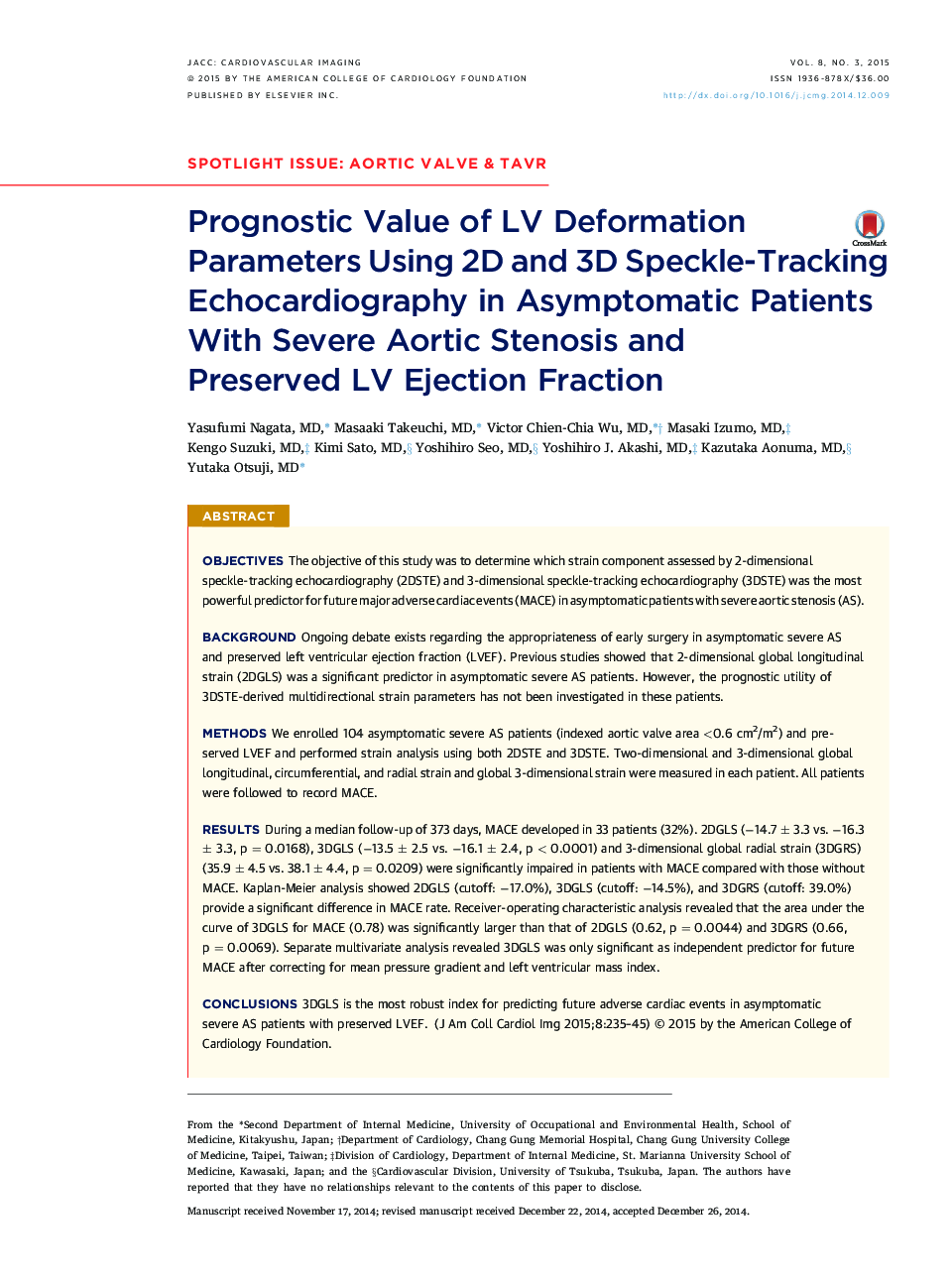| Article ID | Journal | Published Year | Pages | File Type |
|---|---|---|---|---|
| 2937797 | JACC: Cardiovascular Imaging | 2015 | 11 Pages |
ObjectivesThe objective of this study was to determine which strain component assessed by 2-dimensional speckle-tracking echocardiography (2DSTE) and 3-dimensional speckle-tracking echocardiography (3DSTE) was the most powerful predictor for future major adverse cardiac events (MACE) in asymptomatic patients with severe aortic stenosis (AS).BackgroundOngoing debate exists regarding the appropriateness of early surgery in asymptomatic severe AS and preserved left ventricular ejection fraction (LVEF). Previous studies showed that 2-dimensional global longitudinal strain (2DGLS) was a significant predictor in asymptomatic severe AS patients. However, the prognostic utility of 3DSTE-derived multidirectional strain parameters has not been investigated in these patients.MethodsWe enrolled 104 asymptomatic severe AS patients (indexed aortic valve area <0.6 cm2/m2) and preserved LVEF and performed strain analysis using both 2DSTE and 3DSTE. Two-dimensional and 3-dimensional global longitudinal, circumferential, and radial strain and global 3-dimensional strain were measured in each patient. All patients were followed to record MACE.ResultsDuring a median follow-up of 373 days, MACE developed in 33 patients (32%). 2DGLS (−14.7 ± 3.3 vs. −16.3 ± 3.3, p = 0.0168), 3DGLS (−13.5 ± 2.5 vs. −16.1 ± 2.4, p < 0.0001) and 3-dimensional global radial strain (3DGRS) (35.9 ± 4.5 vs. 38.1 ± 4.4, p = 0.0209) were significantly impaired in patients with MACE compared with those without MACE. Kaplan-Meier analysis showed 2DGLS (cutoff: −17.0%), 3DGLS (cutoff: −14.5%), and 3DGRS (cutoff: 39.0%) provide a significant difference in MACE rate. Receiver-operating characteristic analysis revealed that the area under the curve of 3DGLS for MACE (0.78) was significantly larger than that of 2DGLS (0.62, p = 0.0044) and 3DGRS (0.66, p = 0.0069). Separate multivariate analysis revealed 3DGLS was only significant as independent predictor for future MACE after correcting for mean pressure gradient and left ventricular mass index.Conclusions3DGLS is the most robust index for predicting future adverse cardiac events in asymptomatic severe AS patients with preserved LVEF.
